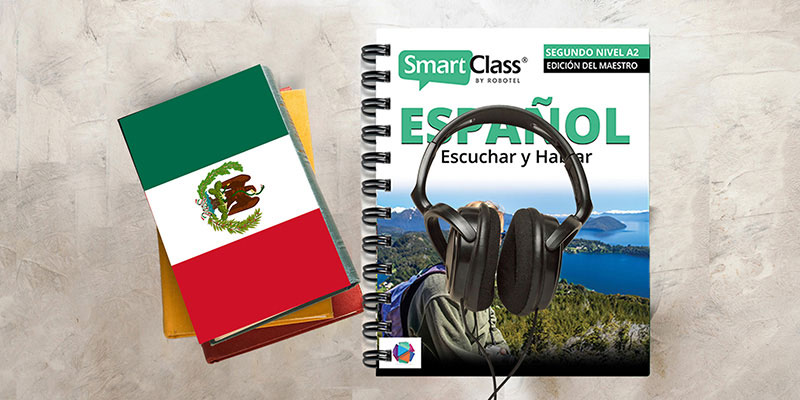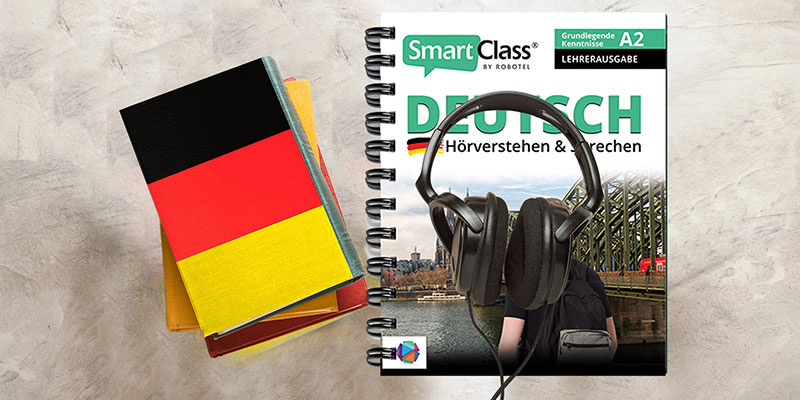ESL activities that are possible in the SmartClass Teaching Platform
As a language teacher, I was always looking for new ESL activities to keep learning fun and engaging for my students. As a student myself, I hated nothing more than the constant Question-Answer type exercises we did all day long in every subject. And especially for language teaching, I believe it is crucial to offer various activities to include all types of learners. While it is possible to create many different activities in the classroom, most online platforms are limited to some Fill-in-the-blank or Multiple Choice activities. But not the SmartClass Teaching Platform! Here you will find 20 different activity templates to engage your students and include all learners!
3. ESL Activities: Speaking Activities (Video and Audio-only)
4. ESL Activities: Pronunciation
5. ESL Activities: Auto-graded (Quizzes)

1. ESL Activities: Viewing
A viewing activity is a great way to share charts, lists, and overviews with your students. Anything that you want your students to read or take a look at should be assigned as a viewing activity. Some examples:
- Vocabulary: Look at the vocabulary list for this chapter/section/week
- Grammar: Look at the grammar chart / Review this grammar concept
- Weekly Schedule: Here is our schedule for this week. Make sure you complete the activities on the correct dates. (especially important and useful during asynchronous learning)
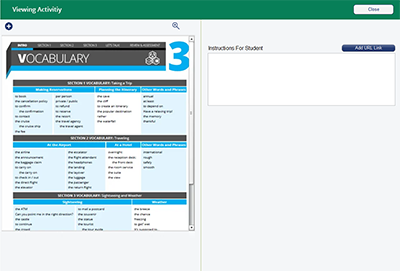
2. ESL Activities: Writing
Within our SmartClass platform, we offer two different writing templates: Open Text and Question-Answer. In the introduction to this blog post, I said how much I hated always writing down answers in complete sentences. While I am still not the biggest fan of them, I know their value and have found a way to make them (in my opinion) more useful and fun. By combining a written activity with an auditory and/or visual component, you can engage your students and train multiple senses and skills at once. Here are some examples of how you can use our writing templates in combination with a video/ or audio stimulus:
a. Open Text
- Story: Look at the picture and tell a story.
- Paraphrase: Listen to audio/watch video and write in your own words what you heard.
- Pen-Pal: Read the email/letter and respond to it in the correct format.
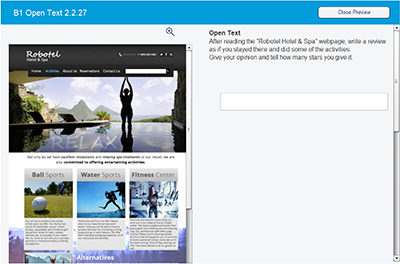
b. Question and Answer
- Comprehension: Watch, listen, or read and answer the questions. (If you want to give the students a hint as to where the answer is in the video/audio put the time in parenthesis).
- Grammar: Based on the picture, decide if each statement is true or false. If it is wrong, type what the person is not doing, and then type what they are doing. Use some contractions.
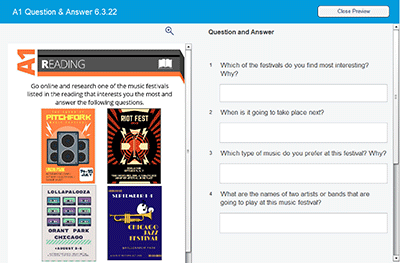
3. ESL Activities: Speaking
We offer a variety of different templates for speaking and listening activities. You can choose an audio file or a video as the stimulus and create two or three different types of activities with each.
a. Open Recording Activities
Open Recording activities are valuable when you want to give your students a lot of time to talk freely about a topic. Their recording keeps going while they speak, think, correct themselves, or look at the visual/written prompts given. Some great examples of open-recording activities are:
- Respond: Look at question(s) and respond
- Prompt: Respond to a prompt. (Weekly/Benchmark)
- Story: Look at the photographs and tell a story
- Pronunciation Paragraph Focus: Make paragraphs around certain phonetic sounds and have the students record
- Images: Look at individual pictures and say what each person is doing
- Translation: Have students listen to an audio or video in their native language and translate into the foreign language (or vice-versa)
Watch this video to see an example
b. Segmented Recordings
The second speaking template is Segmented Recordings. You choose where the system adds pauses in a given audio file, so you don't have to leave pauses while you record the file.
Watch this video to learn how to create segmented recordings
It is also fantastic for audio files you might already have, such as songs, lectures, or files from other materials you are using. By clicking "variable-length responses" in the HUB, you allow your students to take as much time as needed to answer the question after hearing an audio segment. Students then click on "DONE" to automatically move on to the next question/segment they listen to and respond to. Some examples of interactive and engaging segmented recording activities are:
- Question and Answer: Listen to a question and respond
- Listen and Repeat: Practice vocabulary and sentences (> 3-second segments!)
- Put all of your chapter vocabulary in an audio file to be repeated - easy homework activity
c. Continuous Recordings
The third option for a speaking activity is Continuous Recording. For this type of activity, you need to build pauses into your audio file before uploading it. Remember to leave enough time for students to respond or repeat and also build in a pause at the very end for the last question. The difference between a segmented and a continuous recording is that you decide how much time your students have to answer with a continuous recording. They can't choose when to move on to the next question, but as soon as their time is up, the following question/sentence will automatically be played, and they have to respond/repeat. This puts more pressure on the students but also prepares them for a conversation in the "real world." Here are some examples of how to use continuous recordings in your foreign language classroom:
- Vocabulary Pronunciation: Put all of your chapter vocabulary in an audio file to be repeated.
- Question and Answer: Listen to the question and answer (according to a topic, grammar, etc.)
- Unscripted Mock Conversation: Have students listen to Part A and then respond as Part B, making up the information independently.
- Scripted Mock Conversations: Give students a write-up in their native language and have them translate it into the foreign language they are learning to do Part B of a conversation.
- AP Practice: Ask a question and leave 20 seconds for students to respond. Ask another question. String as many questions as you would like. Let the recorder run 20 seconds after the last question for them to answer as well.
- Talk over a video: Have students talk about a video or make up a conversation about what is happening in a video. They will speak while the video is playing, so they have to react and speak while watching.
But remember that students cannot re-record 1 question if they make a mistake. The SmartClass Language Lab is an excellent way to allow for that.
If you prefer to see your students when they talk or have them give a presentation or show what they are talking about, then our Video templates are perfect for you. Open Recordings and Continuous Recordings are possible as well. Some ideas of how to use these two different video recordings are:
d. Video Open Recordings
- Respond: Listen to the recording and respond
- Prompt: Respond to a prompt (weekly/monthly/ or benchmarks beginning, middle, end)
- Story: Look at the picture, tell a story
- Video message: Pretend you are leaving a video message to someone
- Presentation: Practice for presentations and self-reflection OR do a presentation in class one by one. Show these videos in class.
- Getting to Know You: Students make videos as benchmarks at the beginning & end of a level
- Sign Language
e. Video Continuous Recordings
- Vocabulary Pronunciation: Have students watch a video to see the placement of lips, tongue, etc. to mimic and record their pronunciation
- Mock Skype Conversation: Have a pretend Skype conversation (scripted or not)
- Sign Language
4. ESL Activities: Pronunciation
Our pronunciation activities are a fantastic tool to have students practice pronunciation and work on their articulation even when you, the language model, are not around. Our AI-supported pronunciation templates offer speech-to-text and text-to-speech features in 18 different languages: Arabic (15 variations), Chinese (4 variations), Danish, Dutch, English (9 variations), French, German, Italian, Japanese, Korean, Persian, Polish, Portuguese, Russian, Spanish (20 variations), Swedish, Thai, Vietnamese.
While it does not replace the teacher as a language model and certainly has its flaws, it can still be used to get students to listen and speak more in a foreign language and help them overcome any barriers, fears, and nervousness when speaking in the new language.
My students really enjoyed these activities because they gave them a chance to practice in private, without the rest of the class or even me listening to them. They could make mistakes without worrying about others laughing, and they could repeat each sentence as often as they wanted until they got it right. I never graded my students on these activities because I wanted them to keep practicing and playing with the language while also receiving instant feedback from the AI software, how much they got right, and which words they didn't pronounce correctly.
There are three different templates possible for pronunciation, of which I believe the Listen and Speak one is the best and most valuable, as it allows the students to listen to the AI that reads the sentence you (the teacher) wrote and then lets the students repeat the sentence while typing out what it (the AI) heard.
Listen and Speak Example Activities
- Vocabulary Pronunciation: Listen or read vocabulary sentences, and then compare them to AI
- Sentence Pronunciation: Listen or read sentences/phrases, and then compare to AI
- Flashcards: Make flashcards for your students using “Flip PDF Images” and definition capabilities.
It is also possible to set up these pronunciation activities as Listen only or Speak only. Suppose you'd like to test your students and trust the AI to give accurate enough grades. In that case, you could have students practice by listening to the sentences in one activity and then have them only be able to read and speak the sentences in another activity another time, so they can't listen to the AI pronouncing the sentences first. However, I chose to do this kind of testing with a simple recording activity as I wanted to be able to listen to their pronunciation and give them the grade, rather than solely relying on the AI to evaluate my students.
5. ESL Activities: Auto-graded (Quizzes)
A question that might have come to your mind while reading this: "This is all wonderful, and I would love to get my students to talk more, but how am I ever going to have enough time to listen to all these recordings?"
Well, I had the same doubts. The wonderful thing about the SmartClass Teaching Platform is that it is designed especially for language teachers, and we, the content team's former language teachers, are always driving our programmers insane to add more teacher-friendly features.
Therefore, we are proud to be able to offer eight different, auto-graded activity templates for you and your students. Not only does that allow you to spend less time grading, but it also gives your students a nice mix of activities that challenge them in different ways and keep them engaged and focused.
Another benefit of the HUB: It allows you to choose different media files as stimuli for all of these activities, so you are not limited to texts that your students have to read. You can have a video that students watch and then a corresponding multiple-choice quiz, or you upload an audio file that students need to listen to fill in the blanks.
Multiple Choice
- Grammar: Choose the correct verb, conjugation, preposition, adjective ending, etc.
- Comprehension: Listen/watch/read and choose the best answer
- Comprehension: Listen/watch/read and say if a statement is true or false
- Vocabulary: Choose the best vocabulary word to complete the sentence
- What do you see?: Look at an image and answer the questions

Fill-in-the-Blanks
- Grammar: Fill in the correct verb ending, verb tense, missing word, etc.
- Tense: Read the paragraph and change the verb tense for every missing verb
- What’s Missing?: Listen and fill in the missing word or phrase (great with music/lyrics)
- What do you see?: Look at an image and answer the questions
- Vocabulary Story: Put a picture in place of the vocabulary word in a PDF reading
- Correct: Change the incorrect information or find the mistake and fix it in the blank
- Dictation: Listen to the paragraph/sentences and type what you hear.
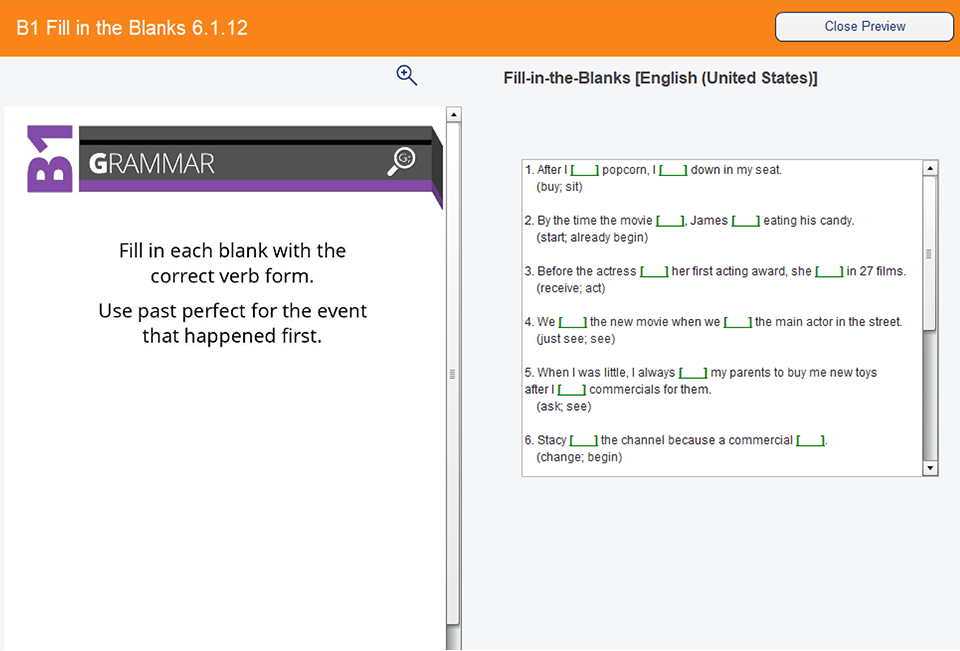
Text Match
- Question & Answer: Look at the question and find the answer that goes with it
- Response: Look at the response and match it with the correct question
- Vocabulary: Match English word and target language word
- Listen: Match the information based on what you hear
- Listen: Match the accurate information to the person that mentioned it
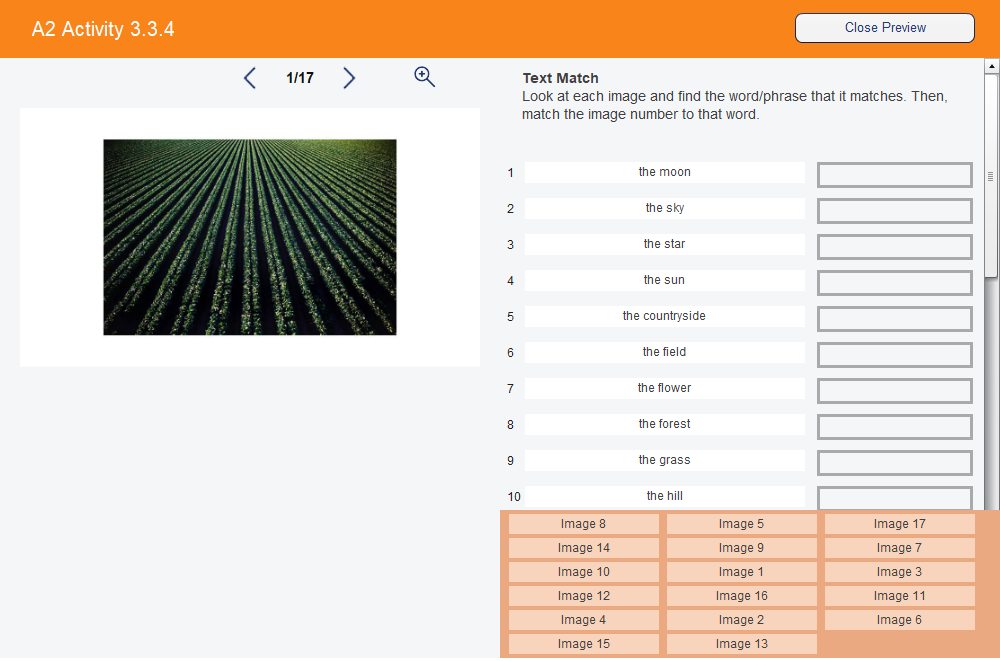
Image Match
- Vocabulary: Match the image with the correct vocabulary word
- Descriptions: Match the sentence with the image it describes
- Listening Comprehension: Works great with time, money, clothing items, descriptions of people, houses, directions around town, etc.
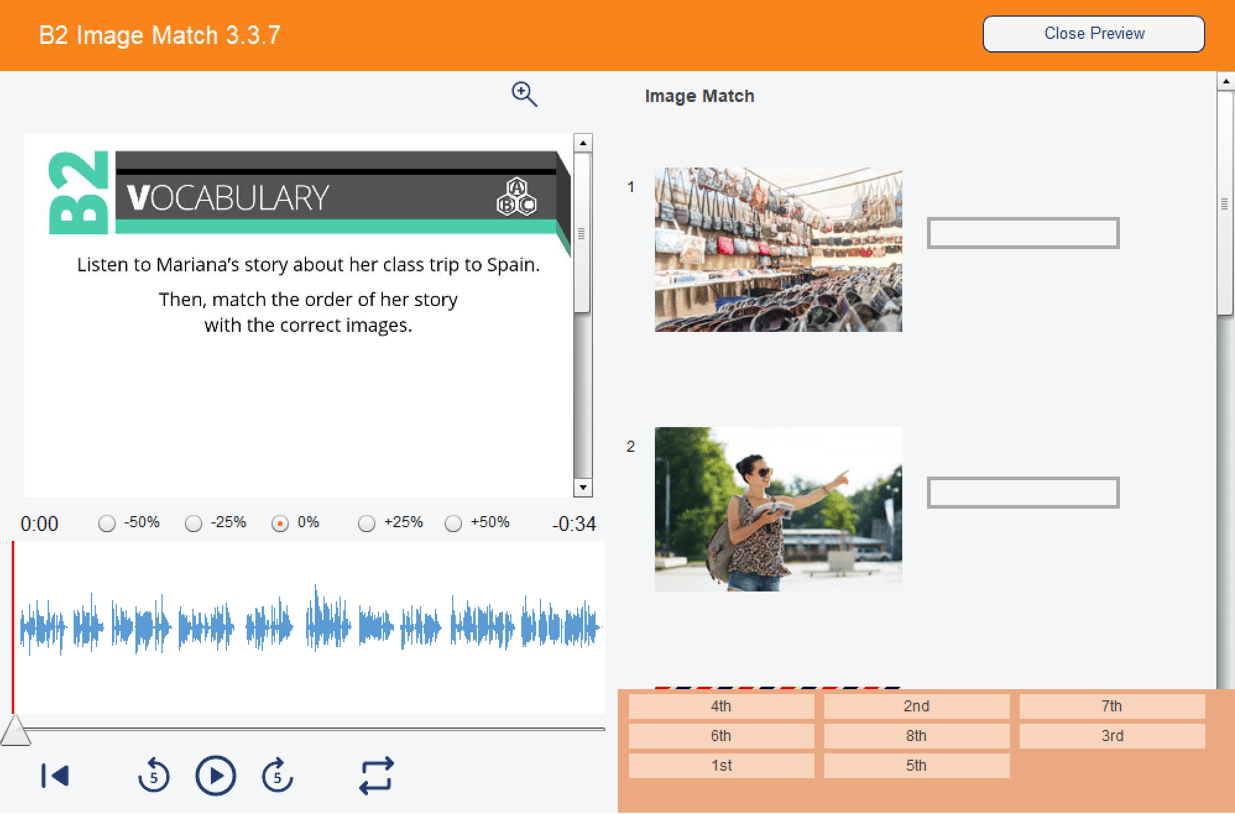
Category Match
- Fill in the Blanks: Listen/watch/read and put the information in the chart correctly
- Grammar: Work with grammar topics such as regular vs. irregular verbs, comparatives vs. superlatives, tense, etc.
- Categories: Put words into categories based on a common idea
- Categories: Put words into the columns based on what someone likes/dislikes/doesn't mind

Sentence Jumble
- Tense: Put the story/events in order based on tense/time
- Comprehension: Put the events in order based on what you hear or read
- Image/Charts: Look at a schedule and put the events in the correct order
- Comprehension: Add paragraph titles to an existing text.
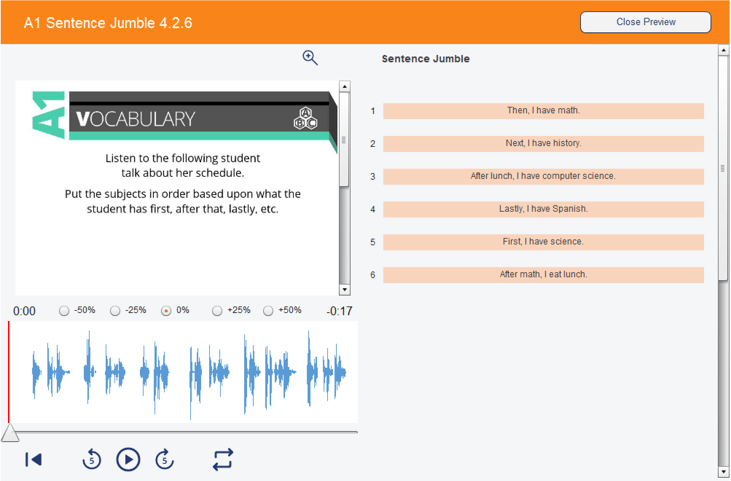
Word Jumble
- Word Order: Work with correct word order for sentences, questions, and imperatives. Make it more challenging by putting a space between punctuation in order to not give the last word away.
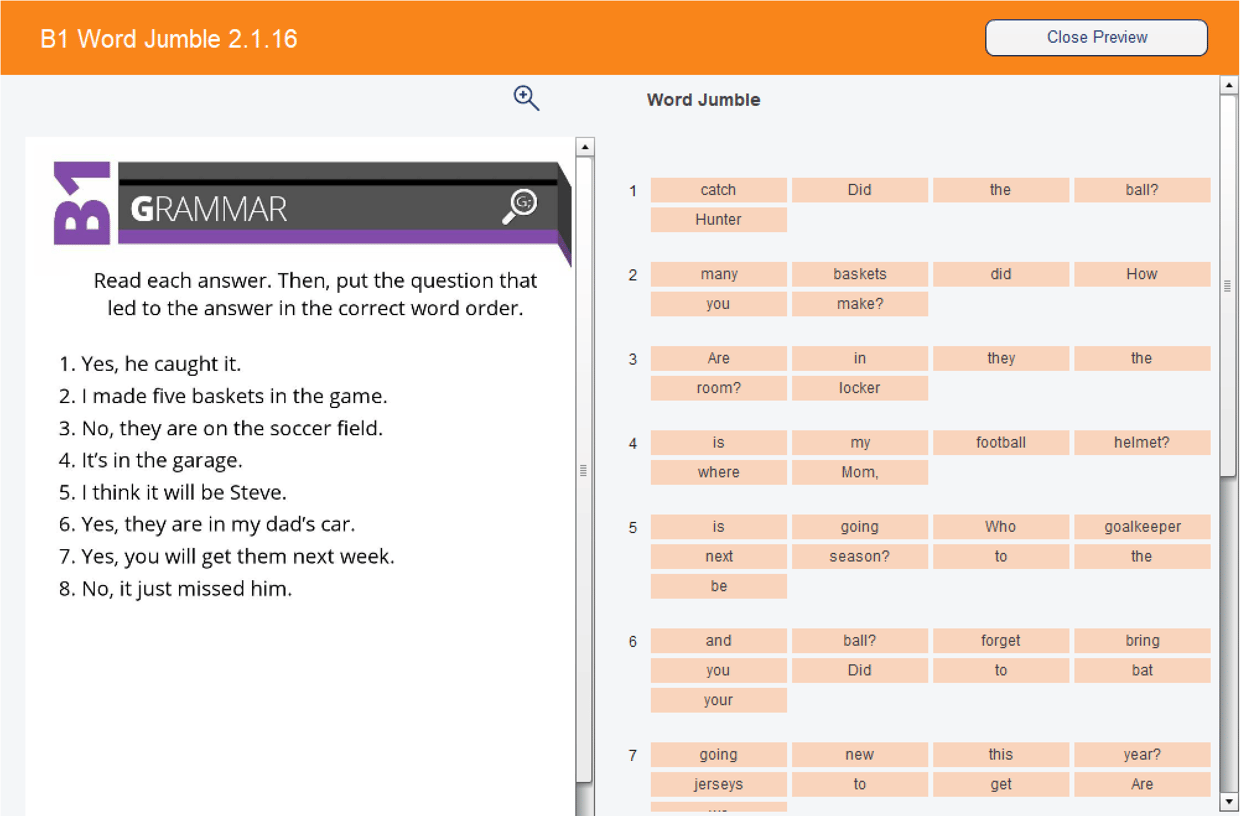
Letter Jumble
- Spelling: Work on spelling the vocabulary words (letters need to be arranged correctly)
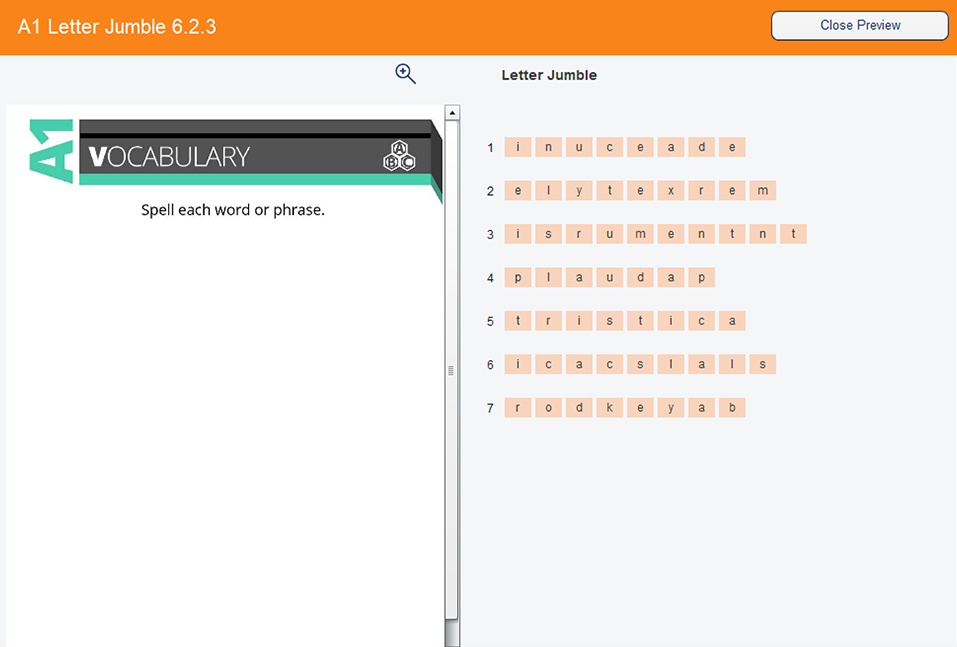
All the ESL activity examples you see here in this post are taken from our complete ESL/EFL curriculum, "Let's Talk! English". We also offer German, Spanish, and Arabic supplemental materials where all the activities focus on speaking, listening, and pronunciation.
You can use the SmartClass Teaching Platform to create your own language activities or get it with our English, German, Arabic or Spanish materials preloaded. You can always edit and manipulate the preloaded activities to fit your students' needs, and you are still able to create your own activities and assign them to your students.
Not enough yet? While we have a long list of ideas of what kind of activities or features we want to add to our platform, we also want to hear from YOU! Leave us a comment or send us an email to let us know what you would like us to add for our next release!

